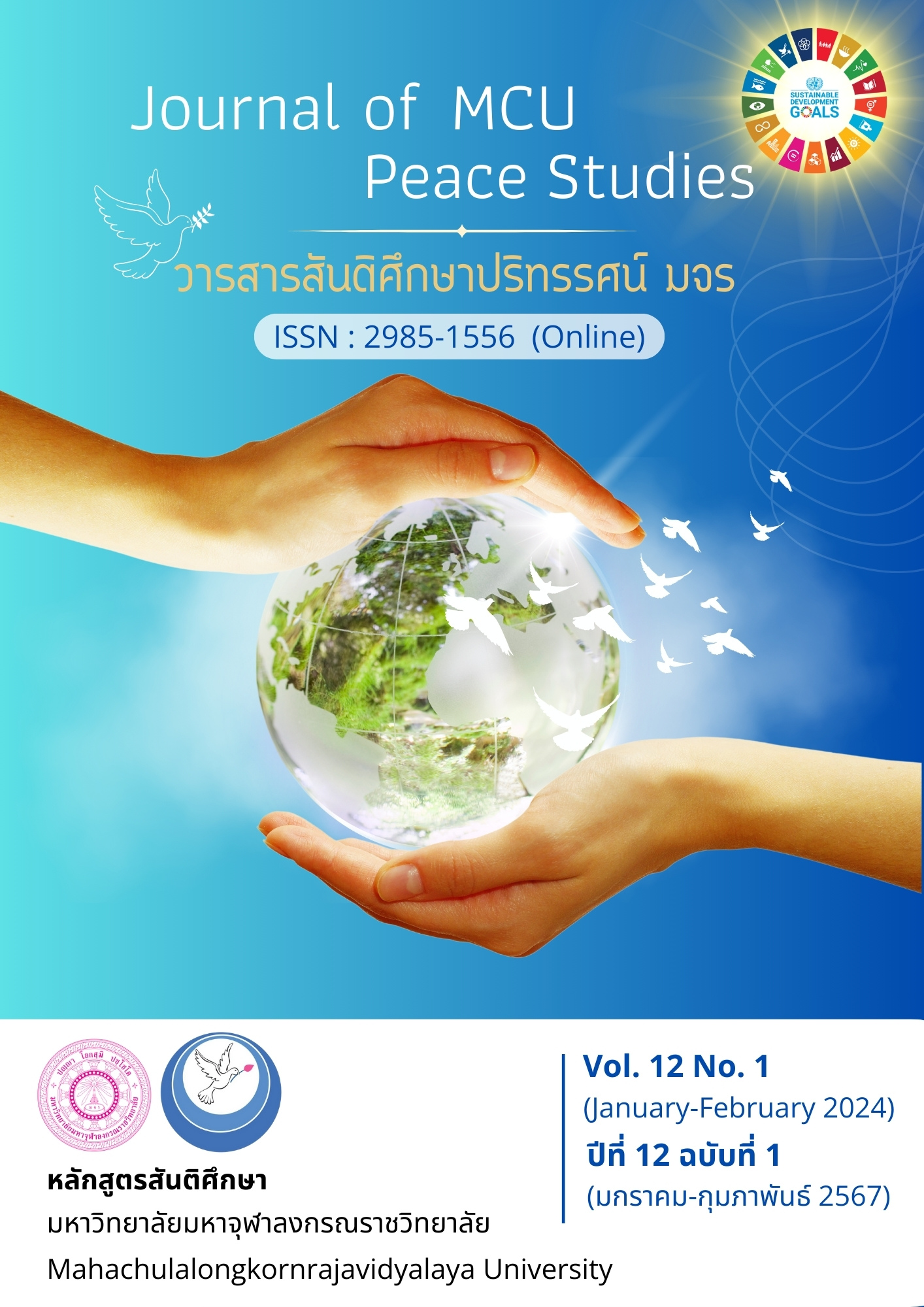The Development of Sappāya-sathan Contributing to Youth Development by Buddhist Peaceful Means
Main Article Content
Abstract
This research article has the following objectives: 1) to study the problems conditions, needs, concepts, theories, and the Buddhist peaceful means about the development of suitable (sappāya) places contributing to youth development; and 2) to present the development of suitable (sappāya) places contributing to youth development by Buddhist peaceful means by applying a mixed research method. The research tools used were an in-depth interview with 30 experts, a focus group discussion with 16 experts, and a satisfaction survey with a 3-level Likert rating scale from 340 youths. The quantitative data were analyzed by percentage and standard deviation, while the qualitative data were examined by inductive method.
From the study, the following results are found:
1) Today there are few places that are conductive to youth training. The project owner can develop the place by applying the concept of Architectural Design Principles in conjunction with the 7 Sappāya Principles.
2) The development of suitable (sappāya) places contributing to youth development based on the Buddhist peaceful means consists of sappāya-based building, with the following details: (1) Placing a master plan based on Dhamma Vinaya, laying down landscape to be clean, safe, and shady with useable space equal to building users and their ages, as well as being legal; (2) Resolving impacts arisen from the project location and manage traffic appropriately; (3) Having good audio-visual equipment, a public address system, and using architecture as a tool to teach Dhamma; (4) Having places to accommodate people from various groups; (5) Having canteen so that food are quality and hygienic with good taste; (6) Having a clear and cool weather; and (7) Having space that allows activities like as meditation and self-study. From surveying the satisfaction of youth toward a model of suitable (sappāya) places contributing to youth development, it was found that youth were satisfied, in the following order : physical space is at the highest ( = 2.93, S.D. = 0.28), followed by intellectual space (
= 2.84, S.D. = 0.39) and learning space (
= 2.77, S.D. = 0.45), respectively. A body of knowledge from the study is ‘7s plus 3’ model.
Article Details

This work is licensed under a Creative Commons Attribution-NonCommercial-NoDerivatives 4.0 International License.
Views and opinions expressed in the articles published by The Journal of MCU Peace Studies, are of responsibility by such authors but not the editors and do not necessarily reflect those of the editors.
References
Chaiyapan, U., Boonchai, P., & Phothibat, P. (2018). Youth Training Centers: The Development of Curriculum and Training Immorality and Ethics, Nakhon Ratchasima Province. Ratchaphruek Journal, 16(2), 18-29.
Mahachulalongkornrajavidyalaya University. (1996). Thai Tripitakas. Bangkok: MCU Press.
National Child and Youth Development Promotion Committee. (2017). National Child and Youth Development Plan 2017-2021. (2nd ed.). Bangkok: J. S. Printing.
Namgan, V. et al. (2021). Application of Sappaya 7 Principles in Developing Mediation Teaching Extension for Peace of Society, Institute of Mental Power, Branch 29, Wat Sutthajinda, Nakhon Ratchasima Province. Journal of MCU Ubon Review, 6(3), 437-447.
Office of the National Economic and Social Development Council, Office of the Prime Minister. (2016). National Economic and Social Development Plan 2017–2021. (12th ed.). Bangkok: Office of the National Economic and Social Development Council, Office of the Priminister.
Phra Brahmagunabhorn (P.A. Payutto). (2016). Dictionary of Buddhism. (34th ed.) Bangkok: Peace Education Foundation.
Rojanasthien, A. (2017). Design Guidelines for Active Learning of Secondary School in Suburban Bangkok. (Master’s Thesis). Thammasat University. Bangkok.
Sthapitanonda, L. (2006). Architectural Design Program, Architectural Design Theory, Course Document 2501215 ARCH DSGN C/C I Architectural Design Program, Architectural Design Theory. Bangkok: Chulalongkorn University. Thammasat University. Bangkok.
Waituannam. (2021). National Agenda and Development - Solving Thai children's Problems in Every Dimension. Retrieved May 9, 2022, from https://www.dailynews.co.th/articles/638590/
Yaot, S. (2019). Suitable Monastic Areas Development. Journal of Educational Review Faculty of Educational in MCU, 6(2), 200-208.

